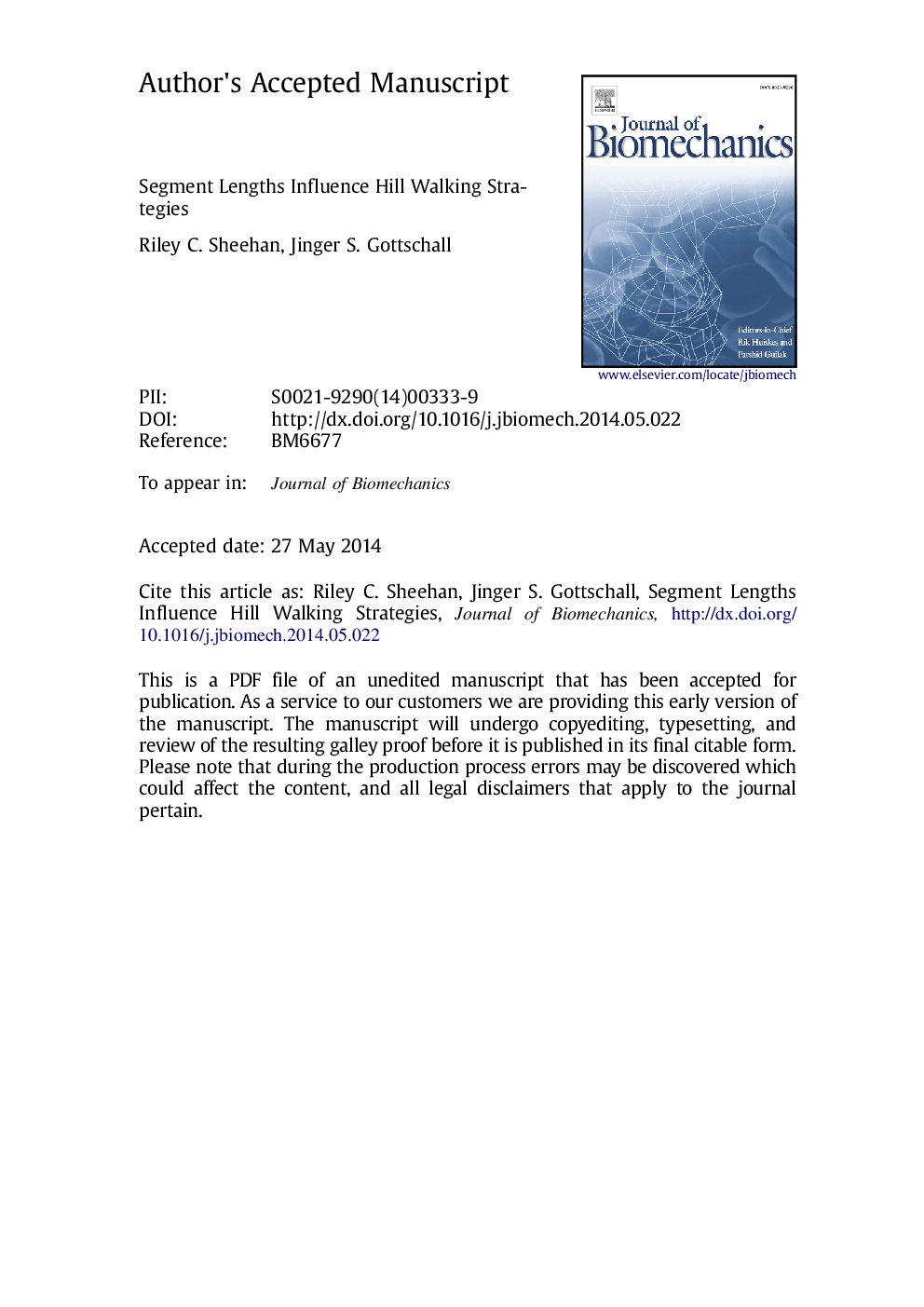| Article ID | Journal | Published Year | Pages | File Type |
|---|---|---|---|---|
| 10431833 | Journal of Biomechanics | 2014 | 31 Pages |
Abstract
Segment lengths are known to influence walking kinematics and muscle activity patterns. During level walking at the same speed, taller individuals take longer, slower strides than shorter individuals. Based on this, we sought to determine if segment lengths also influenced hill walking strategies. We hypothesized that individuals with longer segments would display more joint flexion going uphill and more extension going downhill as well as greater lateral gastrocnemius and vastus lateralis activity in both directions. Twenty young adults of varying heights (below 155 cm to above 188 cm) walked at 1.25 m/s on a level treadmill as well as 6° and 12° up and downhill slopes while we collected kinematic and muscle activity data. Subsequently, we ran linear regressions for each of the variables with height, leg, thigh, and shank length. Despite our population having twice the anthropometric variability, the level and hill walking patterns matched closely with previous studies. While there were significant differences between level and hill walking, there were few hill walking variables that were correlated with segment length. In support of our hypothesis, taller individuals had greater knee and ankle flexion during uphill walking. However, the majority of the correlations were between tibialis anterior and lateral gastrocnemius activities and shank length. Contrary to our hypothesis, relative step length and muscle activity decreased with segment length, specifically shank length. In summary, it appears that individuals with shorter segments require greater propulsion and toe clearance during uphill walking as well as greater braking and stability during downhill walking.
Related Topics
Physical Sciences and Engineering
Engineering
Biomedical Engineering
Authors
Riley C. Sheehan, Jinger S. Gottschall,
